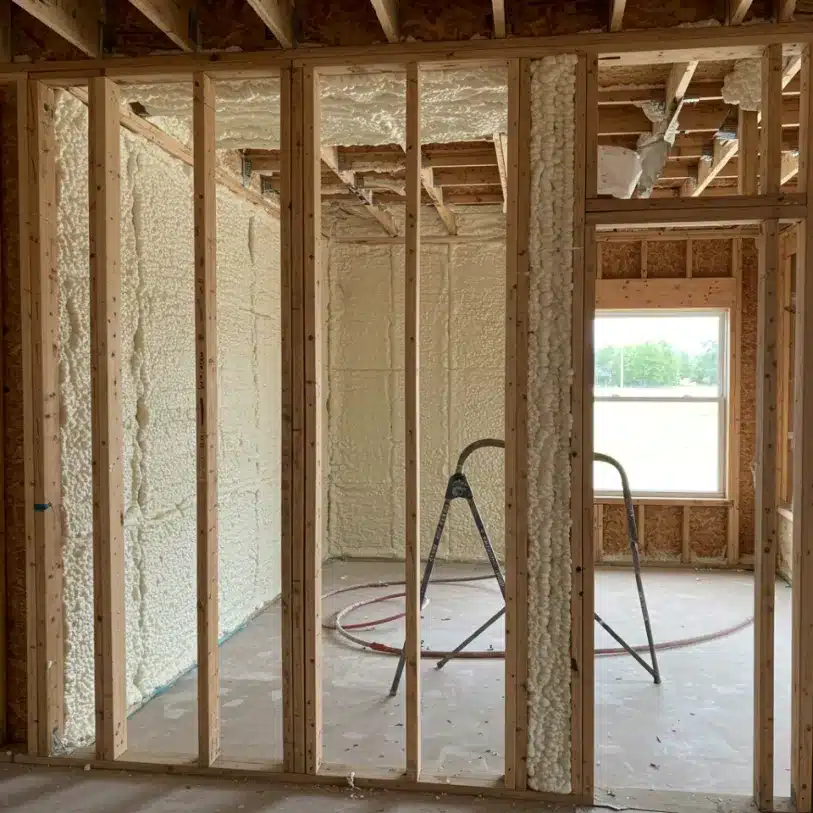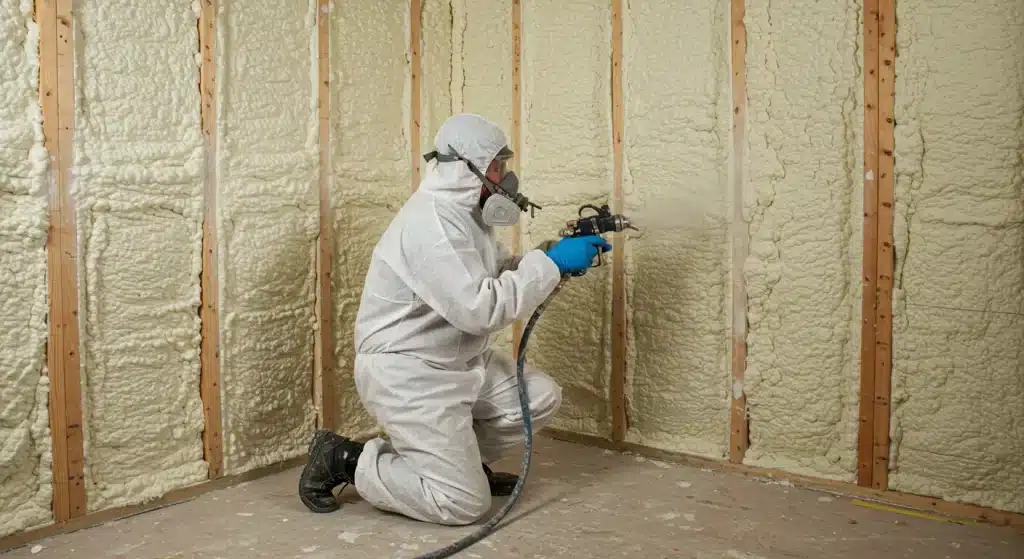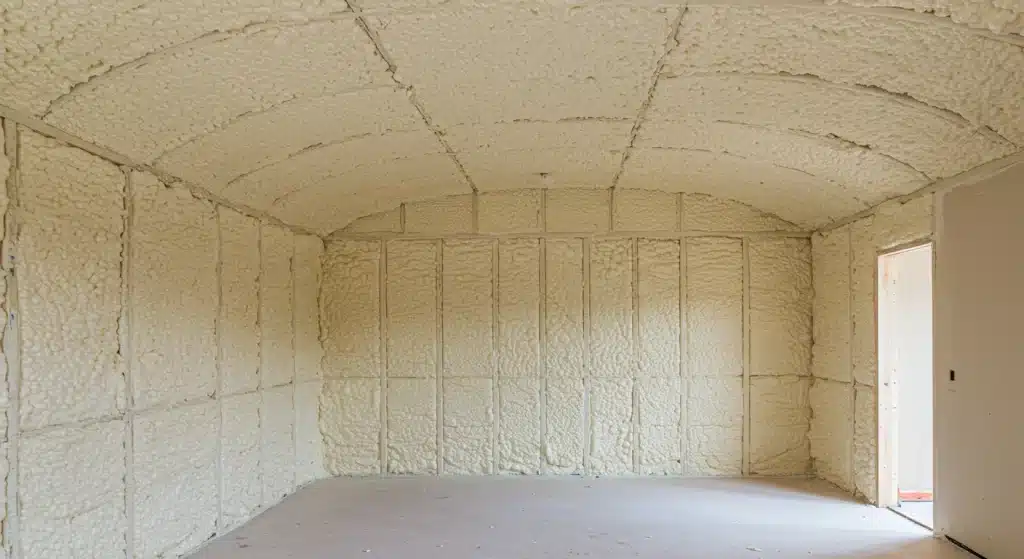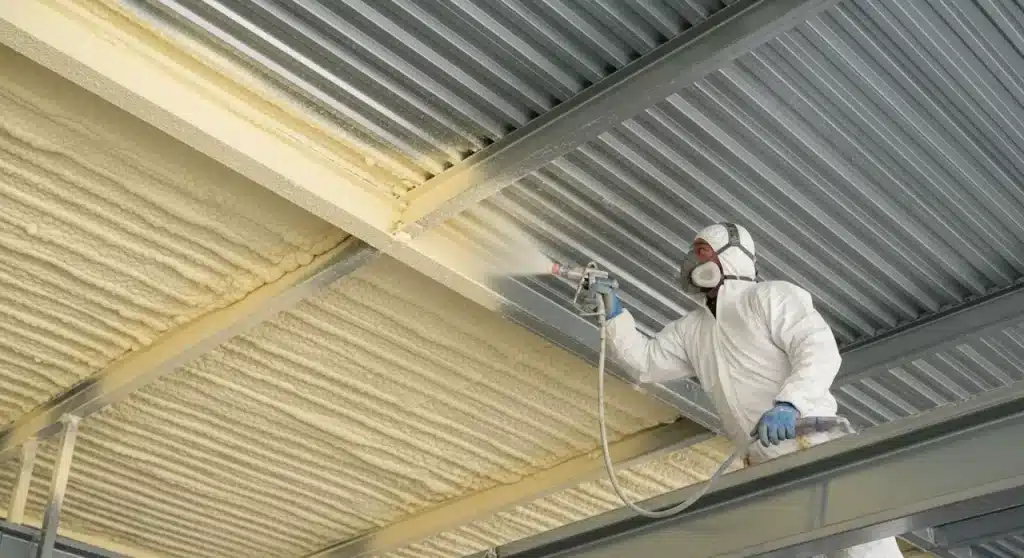Spray foam insulation off-gasses for a short period after installation, with most volatile compounds releasing within the first 24 to 72 hours. After that, levels drop to safe, negligible amounts that pose no health risks under normal conditions. This timeline holds true for closed-cell spray foam, the common type used in homes, based on data from environmental agencies.
This article breaks down the off-gassing process, safety steps, and factors that affect it. Readers will get a clear picture of what to expect during and after installation. Information here draws from years of hands-on work with spray foam projects in various climates, ensuring reliable guidance on this topic.
Understanding Off-Gassing in Spray Foam Insulation
Off-gassing happens when spray foam releases chemicals like volatile organic compounds (VOCs) and isocyanates as it cures. These come from the foam’s components: polyol resin and isocyanate, which react to form the insulating material. During the spray application, workers wear protective gear to handle the uncured foam’s fumes.
Once applied to walls, attics, or crawl spaces, the foam expands and hardens quickly, usually in seconds. The initial off-gassing peaks right after, but it tapers off fast. A report from the EPA notes that indoor air quality returns to normal within days if proper ventilation occurs.
In hot, dry areas like Las Vegas, high temperatures can speed up the curing, shortening the off-gassing window. Installers there often finish jobs in attics where heat makes the foam set even faster than in cooler regions.
Safety Timeline After Installation
The safety timeline starts immediately after the crew leaves the site. Keep the space empty for at least 24 hours to let fresh air circulate. Fans and open windows help pull out any lingering vapors.
Here’s a breakdown of the phases:
| Time Frame | Off-Gassing Level | Recommended Actions |
|---|---|---|
| 0-24 Hours | High (VOCs peak) | Ventilate heavily; avoid entry |
| 24-72 Hours | Moderate to low | Continue airing out; test air if sensitive |
| 72 Hours – 1 Week | Negligible | Normal use possible; monitor for odors |
| Beyond 1 Week | None detectable | Full occupancy safe |
This table comes from guidelines by Building Science Corporation, which base it on lab tests and field observations.
In desert climates, running air conditioning early can help control humidity, as low moisture aids the foam in curing without extra off-gassing. Market data shows spray foam use has grown 12% annually in the U.S. Southwest since 2018, per Grand View Research, due to its energy savings in extreme heat. Yet, off-gassing concerns remain low because of short durations.
Factors That Influence Off-Gassing Duration
Temperature plays a big role. Warmer spots, common in Nevada summers, make chemicals evaporate quicker, cutting off-gassing time. Colder installs might stretch it to 48 hours or more.
Foam thickness matters too. Thicker layers in rim joists or cathedral ceilings release more initially but stabilize faster overall. Poor ventilation during install can trap fumes, extending the process.
Product quality affects this. High-grade foams from reputable makers have fewer additives that off-gas. A study by the Green Building Council found that certified products off-gas 30% less than standard ones.
Humidity levels in arid zones like Las Vegas keep off-gassing minimal, unlike humid areas where moisture reacts with residues.
Things to Consider Before Making a Decision
Before choosing spray foam, check your home’s layout. Open spaces ventilate easier than sealed attics. If anyone in the household has asthma or chemical sensitivities, plan for extra airing time.
Review local building codes in Clark County, which require certified installers to minimize exposure risks. Cost runs $1.50 to $3 per square foot installed, but long-term energy cuts make it worthwhile in hot climates.
Assess the install team’s experience. Crews familiar with local conditions, like dust and heat, handle jobs smoother, reducing off-gassing issues. Get details on the foam type: closed-cell works best for air sealing in variable weather.
Finally, weigh health data. The CDC reports no long-term effects from proper installs, but short-term irritation happens if guidelines skip.
Bonus Tip: Ask about third-party air testing post-install. In Vegas heat, this confirms safe levels before moving back in.
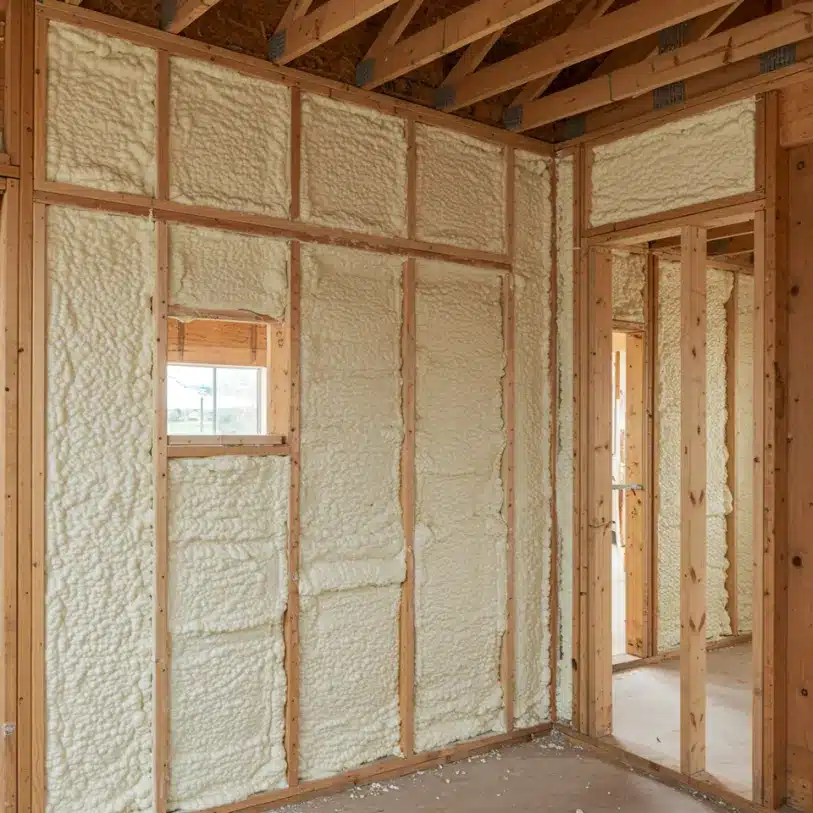
Common Questions
How long do spray foam odors last after installation?
Mild chemical smells typically fade within a day or two if the space is well-ventilated. Strong, lingering odors may indicate ventilation issues and should be checked by professionals.
Is spray foam off-gassing harmful to pets?
Yes, during curing it can be. Keep pets out for at least 72 hours, as their heightened senses make them more sensitive to fumes. Birds are especially vulnerable and may require longer wait times.
How common is spray foam in new homes?
Market facts indicate 70% of new Southwest homes use spray foam for efficiency, according to Statista, proving its safety track record.
Bonus Tip: Seal gaps before install to avoid excess foam use, which cuts down on material and off-gassing.
Quick Answers to Key Concerns
Does off-gassing continue after the first week?
No, levels drop below detectable thresholds by then. Long-term studies show no ongoing release in cured foam.
Can children enter the space soon after install?
Wait 72 hours minimum. Sensitive groups benefit from a full week if odors linger.
How does Las Vegas climate affect this?
Dry air speeds curing, often making the timeline shorter than in wetter areas.
Is open-cell foam different?
Yes, it off-gasses less overall but takes longer to fully cure in humid spots—not ideal for Vegas.
What if I smell fumes later?
Rare, but it might mean incomplete curing. Increase ventilation and consult the installer.
Key Points on Off-Gassing and Safety
Spray foam off-gasses briefly, mainly in the first few days, with safety achieved through ventilation. Factors like climate and product choice shape the exact timeline. Always prioritize air quality checks in your area.
Evaluate your home setup, health needs, and local conditions before proceeding. This ensures the benefits outweigh any short-term hassles.
Next Steps for Your Insulation Project
For straightforward advice on spray foam in the Las Vegas area, contact a certified local installer to discuss your space’s needs and get tailored insights on installation and safety. This helps confirm if it’s right for your setup.
Sources
- EPA – Government report on spray foam and indoor air quality, detailing off-gassing timelines and safety measures.
- Building Science Corporation – Technical digest on spray foam installation, including field-tested curing and ventilation guidelines.
- Grand View Research – Market analysis report on insulation growth, with data on regional adoption in the U.S. Southwest.

